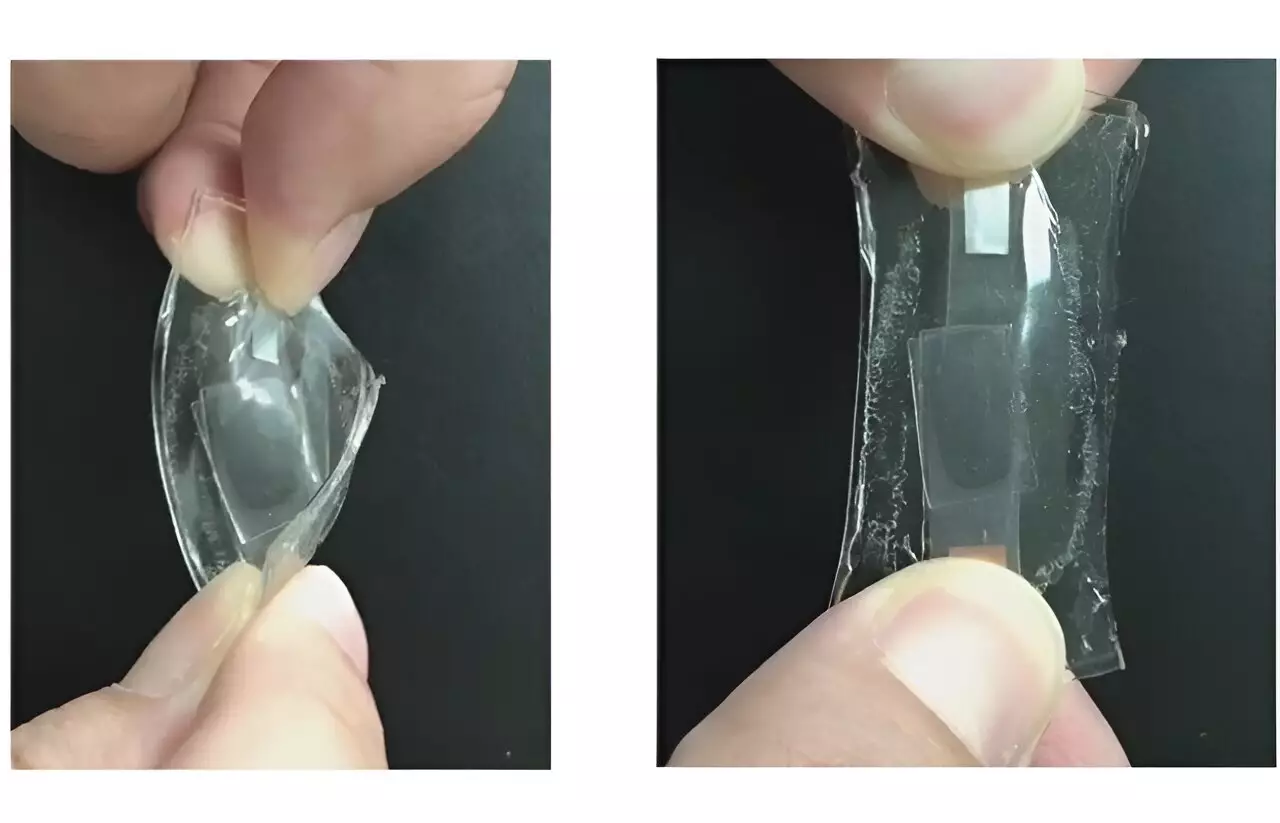Stretchable batteries are essential for the development of flexible electronics, particularly in the field of wearable health monitors. Traditional battery designs are not suitable for devices that bend and stretch, requiring a significant shift in battery technology. Previous attempts at creating stretchable batteries involved woven conductive fabric or rigid components folded into expandable shapes resembling origami. However, these methods often resulted in batteries with moderate elasticity, complex assembly processes, or limited energy storage capacity, especially over multiple charge/discharge cycles.
Researchers at ACS Energy Letters have made a breakthrough in stretchable battery technology by developing a lithium-ion battery with entirely flexible components. Unlike previous prototypes, every part of this battery, including the electrodes and the electrolyte layer, is elastic. The key innovation lies in the incorporation of the electrolyte into a polymer layer sandwiched between two flexible electrode films, creating a solid, stretchy battery. This new design eliminates the problems associated with weak connections between the electrolyte layer and electrodes or the instability of fluid electrolytes.
To create the stretchable battery, the researchers utilized a thin film of conductive paste containing silver nanowires, carbon black, and lithium-based cathode or anode materials as electrodes. A layer of polydimethylsiloxane, a flexible material commonly used in contact lenses, was applied on top of the paste. The addition of a lithium salt, a highly conductive liquid, and stretchy polymer ingredients led to the formation of a rubbery layer capable of expanding by 5,000% of its original length. The final device was sealed in a protective coating for durability.
Comparative tests between the solid stretchy battery and a traditional liquid electrolyte battery revealed significant advantages in performance. The new stretchable battery exhibited six times higher average charge capacity at a fast-charging rate and maintained a more stable capacity over 67 charge/discharge cycles. In other prototypes using solid electrodes, the battery’s polymer electrolyte demonstrated consistent operation over 1,000 cycles, with a minimal 1% capacity drop in the first 30 cycles compared to a 16% drop in liquid electrolyte batteries.
Future Applications and Outlook
While there are still areas for improvement, the development of fully stretchable, solid batteries represents a promising advancement for wearable and implantable devices that need to conform to the body’s movements. With continued research and innovation, stretchable batteries may soon become a standard component in the next generation of flexible electronics, opening up new possibilities for integrated wearable technologies in healthcare and beyond.


Leave a Reply